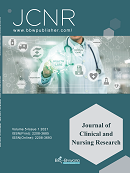Abstract
When the adjustment function of the eye is still, the external parallel light can not form a clear image on the retina after passing through the refractive effect of the eye, and the phenomenon of imaging in front or behind the retina is called ametropia. Common refractive errors include: Myopia, hyperopia, astigmatism, presbyopia, and myopia is the most common ametropia in children and adolescents. Myopia refers to the refractive state in which the external parallel light (distance greater than 5 meters) enters the eye and focuses on the retina after passing through the ocular refractive system when the eye is in the state of adjustment and rest. In general, myopia can be diagnosed when se is less than - 0.5d, and it can be divided into light, medium and high myopia according to the degree of myopia. Among them, mild myopia is 0d <=diopter <- 3D, moderate myopia is - 3D <= diopter < - 6D, high myopia is diopter >= - 6D. Nowadays, the myopia rate of children and adolescents is high in many countries, and it has become a global public health problem. Myopia not only affects the study and life of children and adolescents, but also causes a variety of serious ophthalmic complications (such as cataract, glaucoma, myopic macular degeneration and retinal detachment) with the growth of age. Studies have shown that as early as 2015, the global economic loss caused by uncorrected myopia was about 240 billion US dollars, of which the potential loss in East Asia, mainly China, was the largest. It is important to understand the prevalence, causes and intervention measures of myopia. Therefore, this paper summarizes the current situation of the research on the prevalence trend, influencing factors and intervention measures of myopia in children and adolescents.
